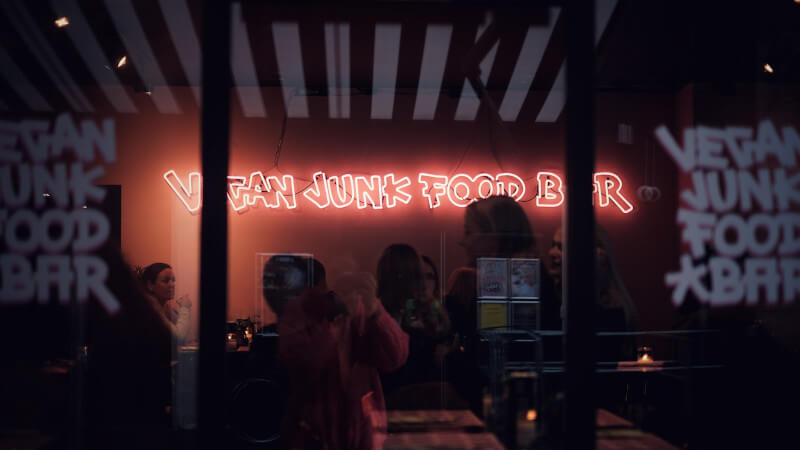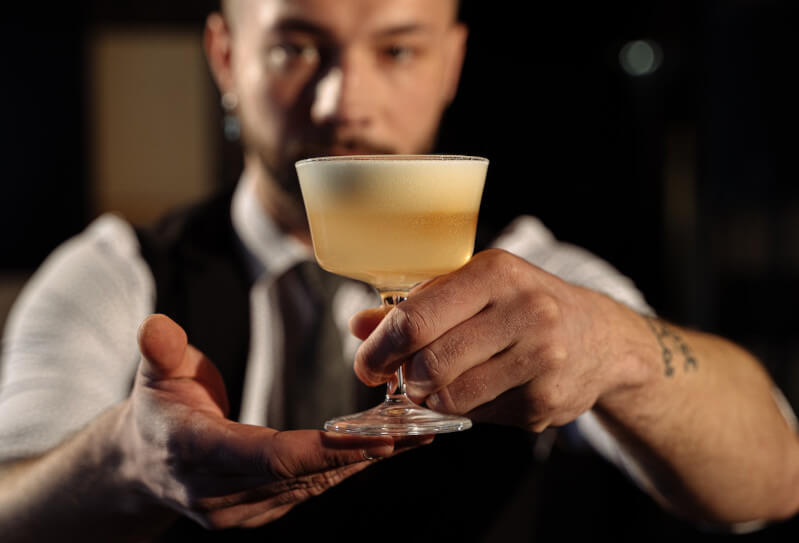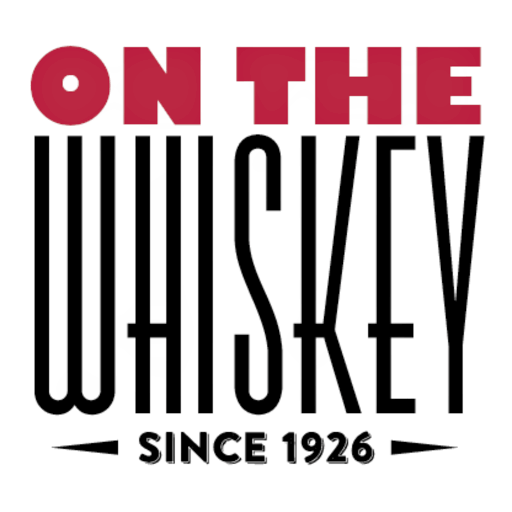The drinking world is still in flux with new trends emerging old favorites making comebacks, and industry shifts influencing the drinking preferences of consumers. As we look forward to 2024, there are 6 distinct trends based on past patterns and current market dynamics that are poised to shape our drinking choices.
1. Rising Consciousness Towards Alcohol Consumption
Recent years have seen a noticeable shift in how consumers approach alcohol consumption. While drinking was once considered a free-spirited indulgence, the pendulum has swung towards moderation and mindfulness. After many experienced the repercussions of excessive drinking during the pandemic, there’s been a heightened awareness of alcohol’s impact on health and well-being. This has led to an increase in the demand for low-alcohol or zero-proof beverages. DC’s Double Chicken Please, now displays the alcohol content for every draught cocktail, reflecting a growing consumer demand for transparency. Upcoming publications by Natasha David and Derek Brown are expected to elaborate on this trend, advocating for more conscious drinking.
2. Supply Chain Complexities
One of the notable trends impacting the drinking culture in 2024 is the challenge posed by supply chain disruptions. A recent survey among U.S. bartenders highlighted a growing list of ingredients that have become difficult or even impossible to source. Some of these include staples like Angostura, and Amaretto, various amaros such as Averna and Cynar, Buffalo Trace whiskey, the ever-popular Hennessy, select imported beers, and specific tequila brands like Casa Azul and Don Julio. Interestingly, bartender Lauren Frazer highlighted a broader issue: difficulties in procuring products packaged in glass.
In the face of these challenges, bars and their teams are not sitting idle. Innovative solutions are emerging as they adapt to these disruptions. Many establishments are venturing into crafting their versions of amaro, leaning more into local spirit offerings, and diversifying their brand choices for liquors to ensure that their cocktail menus remain robust. A case in point is the innovative approach at Williams & Graham in Denver. Due to the unavailability of short straws, they’ve resorted to trimming longer paper straws to the desired size.
This trend underscores a critical takeaway for patrons: If a bar happens to be out of a beloved drink or ingredient, it’s essential to understand that the root of the issue likely lies in supply chain complications, rather than the establishment’s oversight.
3. The Rise of Vegan Bars

As veganism continues its upward trend, it’s no surprise that bars catering exclusively to this demographic are gaining popularity. These establishments focus not just on alcohol but also on vegan snacks and dishes to provide a comprehensive experience. From cashew, cheese-topped tots to aquafaba-based Pisco Sours, vegan bars are becoming a mainstream phenomenon. Ravi de Rossi’s Overthrow Hospitality demonstrates that vegan bars can find success in mainstream markets, with Neon Tiger in Charleston and Bar Vegan in Atlanta paving the way for more to come.
4. Expanding Horizons of the Agave Spirit
Tequila and mezcal have experienced unprecedented sales, leading to innovative spirit categories and variations, not just in Mexico but globally. The market has seen a rise in “agave-touched” spirits, which now includes whiskey matured in tequila and mezcal barrels, as well as a unique concoction – agave vodka. While a significant portion of tequila typically matures in bourbon barrels, notable producer Patrón has diversified by launching an añejo that has spent two years in sherry casks, offering a perfect base for tequila Old Fashioneds.
El Tesoro is breaking new ground with its line of tequilas aged in non-traditional barrels. One of the highlights from this series is a tequila aged in Laphroaig barrels, known for its intense peaty flavor. In response to concerns over sustainable agave farming practices and to incorporate more traditional Mexican flavors into spirits, Mexico introduced its debut corn whiskey. Brands like Abasolo and its counterpart, Nixta—a sweetened corn liqueur—have been crafted from 100% nixtamalized corn grown in the country. Those sampling Nixta might find its taste reminiscent of a fresh tortilla.
5. Supporting Black-Owned Distilleries
The call for racial equality and justice has amplified the need to support Black-owned businesses, including distilleries. While brands like Jackie Summers’s Sorel have seen revival thanks to support from bigger players, there’s still a significant gap in representation and equity in the spirits industry. The alcoholic beverage industry generates $546.15 billion in annual revenue, but a minuscule fraction of that reaches Black-owned spirits. Continuous advocacy from consumers and activists is vital to bridge this disparity. For those eager to amplify Black excellence in this sector, here are several noteworthy Black-owned distilleries:
- Brough Brothers Distillery: Founded by three brothers, Victor, Bryson, and Christian Yarbrough, this Louisville-based distillery is notably the first and only Black-owned distillery in Kentucky. With their bourbon, they aim to capture the unique taste and culture of their hometown.
- Du Nord Craft Spirits: Based in Minneapolis, this distillery was co-founded by Chris Montana and his wife, Shanelle. They take pride in producing a diverse array of spirits, from gin to liqueurs, with a commitment to local sourcing and sustainability.
- Mishka Distilleries: Located in Pennsylvania, Mishka has made waves in the industry with its array of premium spirits. By 2020, the distillery, emphasizing artisanal production methods, finally turned a profit, marking a significant milestone for the brand.
- Victor George Spirits: This Florida-based distillery has gained recognition for its quality vodkas. Founded by Victor G. Harvey, the company is set to expand its reach with a $2.4 million investment to construct a new distillery in Ft. Lauderdale.
For those interested in contributing to the growth of these businesses, here are actionable steps:
- Educate and Share: Learn about these brands and share your knowledge with friends, family, and peers. Word-of-mouth is a powerful tool.
- Purchase: Opt for products from these distilleries for personal consumption or as gifts.
- Engage: Follow these brands on social media and join their mailing lists to stay updated on new releases, events, or promotions.
6. The Great Mixologist Migration

The closure of iconic establishments, like New York’s The Nomad Hotel and Bar, has initiated a reshuffling of talent in the bartending world. Renowned mixologists and bartenders are spreading their expertise across various venues, both nationally and globally. This migration signifies a redistribution of skills, bringing top-tier cocktail experiences to a broader audience. Former NoMad talents, Pietro Collina and Leo Robitschek, collaborated with the London NoMad, while Nathan McCarley-O’Neill, another NoMad alumnus, now crafts beverages at Claridge’s.
Several factors have driven the notable movement of talent within the mixology sector which ought to be recognized:
- Shifting Dynamics in the Hospitality Sector: The closing of revered institutions, like New York’s The Nomad Hotel and Bar, meant that accomplished mixologists and bartenders were left seeking fresh pastures. Such closures led to a surge in available talent, ready to infuse their expertise into different venues.
- Globalization of Talent: With renowned bartenders spreading their expertise, we see a blending of cultural flavors and techniques. Pietro Collina and Leo Robitschek’s collaboration with the London NoMad, and Nathan McCarley-O’Neill’s shift to Claridge’s, indicates the increasing cross-pollination between American and European cocktail cultures.
- The Role of Supply Chain Disruptions: As previously discussed, supply chain challenges have forced bartending professionals to get creative. The demand for local spirits and the need to adapt based on ingredient availability may have indirectly promoted a broader dispersal of bartending talent, as they seek venues and markets more aligned with their innovative approaches.
- Redefining Cocktail Experiences: This migration brings top-tier cocktail experiences to a wider audience. With expertise no longer confined to exclusive establishments in major cities, there’s a democratization of quality cocktail experiences. Consequently, consumers everywhere can expect higher standards and more inventive beverage offerings.
What Does This Mean For the Future of Mixology?
The redistribution of mixological talent carries several potential implications:
Elevated Standards: With esteemed mixologists working in a more diverse array of venues, the overall standard of cocktails, even in smaller locales, is set to rise.
Increased Collaboration: As talent moves and interacts with different cultures and markets, we can expect an uptick in collaborative ventures, leading to a richer, more diverse cocktail scene.
Consumer Expectations: The broader audience will grow accustomed to superior cocktail experiences, further driving venues worldwide to upskill, innovate, and heighten their offerings.
There have been revolutionary shifts in the beverage sector in recent years. The way we drink in 2024 will be heavily influenced by a wide range of factors, including changes in consumer demand for healthier options, supply chain disruptions, and sociopolitical movements. This new era of creativity and reinvention holds great promise for consumers of the spirits they love.

